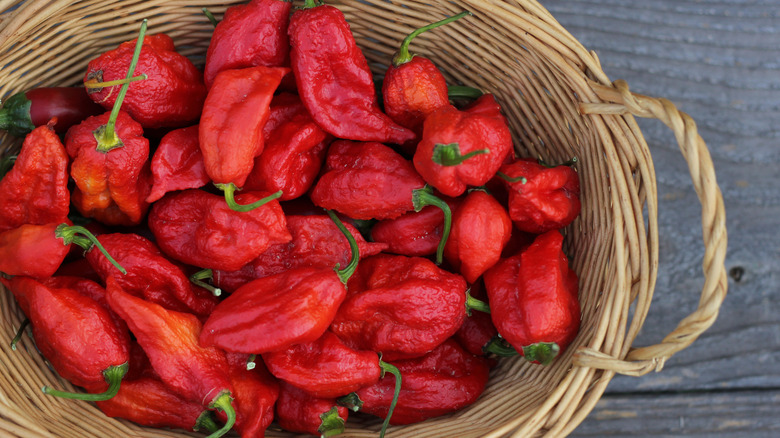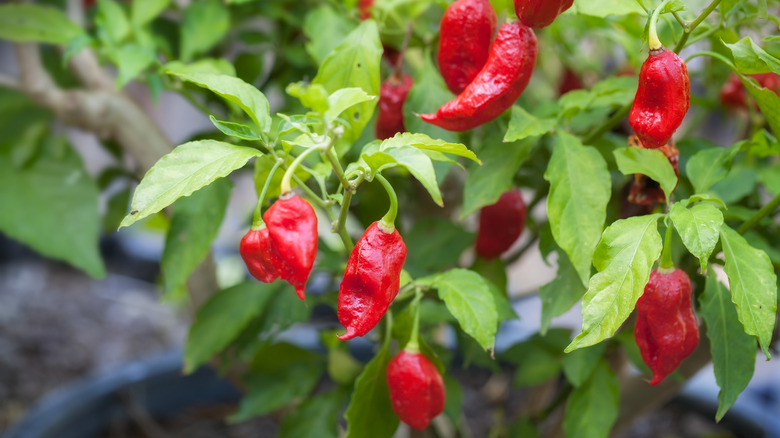The Tip For Cooking With Ghost Peppers Every Beginner Should Know
Bhut jolokia, otherwise known as the ghost pepper, is an incredibly spicy chili; at their maximum heat, they hover on the Scoville scale at around 1 million heat units. (Just to give you an idea of exactly how hot that is, jalapeños come in at between 2,500 and 8,000 Scoville heat units.) They're called ghost peppers because their heat tends to creep up on you as you eat them, just as it does while you cook them.
The most important thing to keep in mind when cooking with hot peppers like ghosts is that temperature and time will affect their spice level. Cooking them low and slow, as you do with chili or curry, can often result in a hotter dish, while introducing them to the quick and intense heat of a grill can break down the capsaicin, taming the spiciness a little.
But don't be intimidated by the complexity of these peppers — or their devilishly red and wrinkly skin. As scary as they look, ghost peppers offer a nuanced flavor and spice to a variety of dishes from salsa to marinades. Despite the fact that ghost peppers are so hot they're often used as the base for military grade pepper spray, they do have a citrusy and smoky flavor. This makes them a wonderful addition to homemade salsa or hot sauces. Just be cautious and use them sparingly until you have a sense of what they're capable of.
How to safely cook with ghost peppers
It's a good idea to have a healthy fear of ghost peppers. Much like kitchen knives, they serve a beautiful function when used properly, but, if mishandled, can result in injury.
First, you'll want to consider seeding your peppers before adding them to any dish because, as with all chilis, much of the heat comes from the seeds. Be sure to wear a mask, gloves, long sleeves, and cooking goggles when handling them to avoid painful chili oil burns. Don't make the mistake of thinking you're skimping out on spice by doing this: We are talking about a pepper that's 11 times hotter than a habanero.
While you are learning to cook with ghost peppers, it's best to stick to recipes with fewer moving parts. Infused chili oil is a good place to start, as it will give you an idea and appreciation for what kind of heat you're dealing with. From there, you can experiment with homemade hot sauce and salsa — better to work out your relationship with these fiery peppers through condiments rather than main courses. Avoid recipes that require a high degree of chemistry and longer cooking times, like curries or other heavily spiced dishes, when starting out. The best tip to remember when cooking with ghost peppers is that a little goes a long way. Think about cooking with ghost peppers like cutting your own bangs: Less is more, and you can always do more later.

